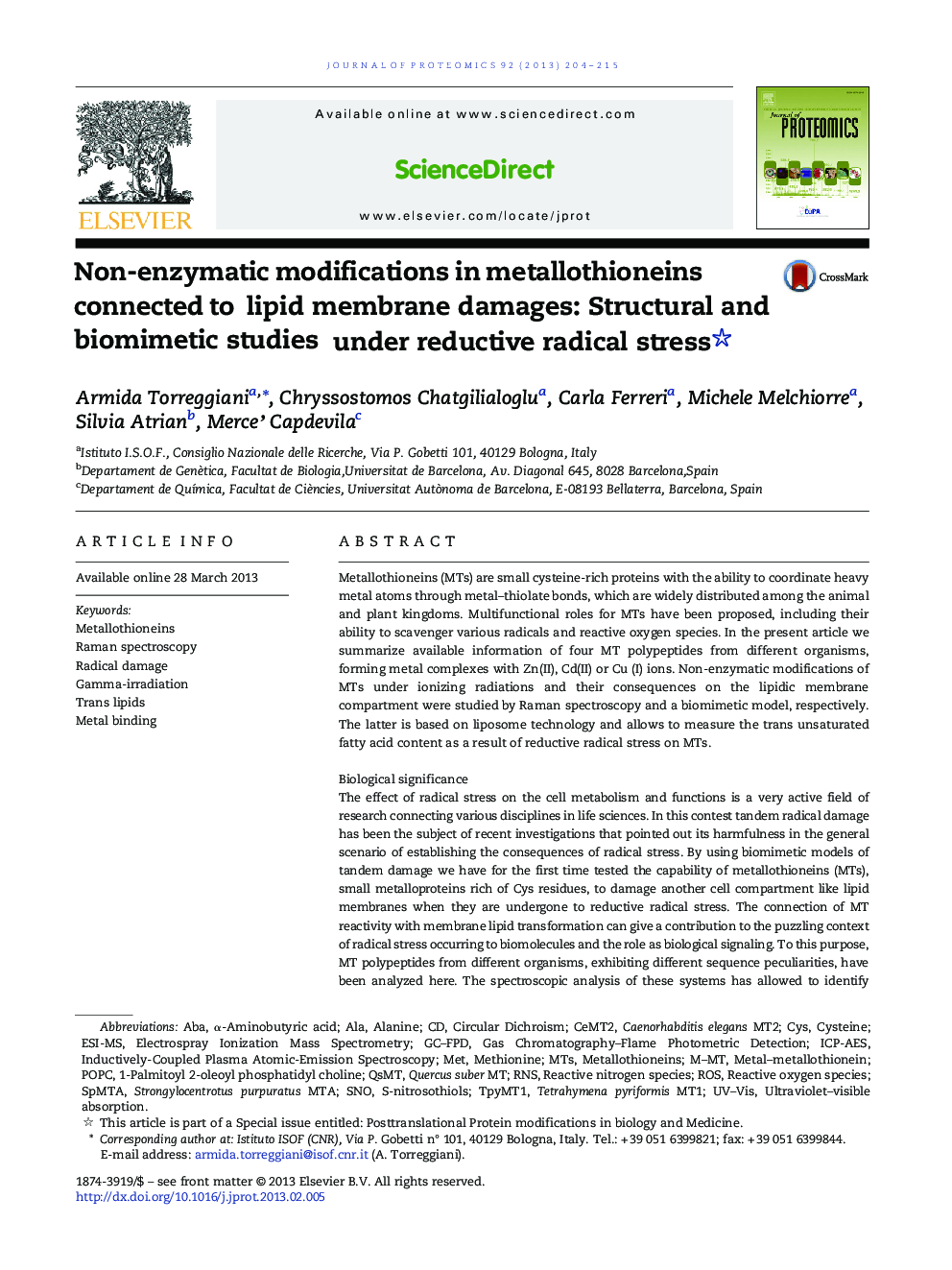| Article ID | Journal | Published Year | Pages | File Type |
|---|---|---|---|---|
| 1225488 | Journal of Proteomics | 2013 | 12 Pages |
•Free radical stress causes desulfurizations in metallothioneins.•Diffusible sulfur-centered radicals are generated from sulfur-containing moieties.•These radical species migrate to the lipid membrane and cause the formation of trans fatty acids.•Metal–thiolate clusters act as very efficient interceptors of reducing radical species.
Metallothioneins (MTs) are small cysteine-rich proteins with the ability to coordinate heavy metal atoms through metal–thiolate bonds, which are widely distributed among the animal and plant kingdoms. Multifunctional roles for MTs have been proposed, including their ability to scavenger various radicals and reactive oxygen species. In the present article we summarize available information of four MT polypeptides from different organisms, forming metal complexes with Zn(II), Cd(II) or Cu (I) ions. Non-enzymatic modifications of MTs under ionizing radiations and their consequences on the lipidic membrane compartment were studied by Raman spectroscopy and a biomimetic model, respectively. The latter is based on liposome technology and allows to measure the trans unsaturated fatty acid content as a result of reductive radical stress on MTs.Biological significanceThe effect of radical stress on the cell metabolism and functions is a very active field of research connecting various disciplines in life sciences. In this contest tandem radical damage has been the subject of recent investigations that pointed out its harmfulness in the general scenario of establishing the consequences of radical stress. By using biomimetic models of tandem damage we have for the first time tested the capability of metallothioneins (MTs), small metalloproteins rich of Cys residues, to damage another cell compartment like lipid membranes when they are undergone to reductive radical stress. The connection of MT reactivity with membrane lipid transformation can give a contribution to the puzzling context of radical stress occurring to biomolecules and the role as biological signaling. To this purpose, MT polypeptides from different organisms, exhibiting different sequence peculiarities, have been analyzed here. The spectroscopic analysis of these systems has allowed to identify modifications affecting metal–thiolate clusters, cystines, and Met residues, acting as efficient interceptors of reducing radical species. The chemical mechanism involving sulfur-containing moieties under reductive conditions discloses new scenarios that bring to the loss of sulfur-centered radicals by desulfurization reactions that change the natural sequences of MTs. Ala is a genetically coded amino acid, therefore the mutation of Cys to Ala occurring to a sequence by the radical process so far discussed, corresponds to a post-translational modification. Research on such mutation connected also to a free radical stress will be important to contribute for a complete picture of the degeneration associated to diseases and aging. Analogously, the Met to Aba mutation occurring after reductive stress transforms a natural amino acid into a natural, non-genetically-coded congener. Aba corresponds to a homologation of the alkyl chains normally present in genetically codified amino acids, such as methyl (in Ala) and isopropyl (in Leu), with an ethyl unit. Based on alkyl substitution, this modification can therefore be studied in order to understand its general consequences on the structure–activity relationships in proteins and, in particular, on molecular interactions. This article is part of a Special issue entitled: Posttranslational Protein modifications in biology and Medicine.
Graphical abstractFigure optionsDownload full-size imageDownload high-quality image (135 K)Download as PowerPoint slide
